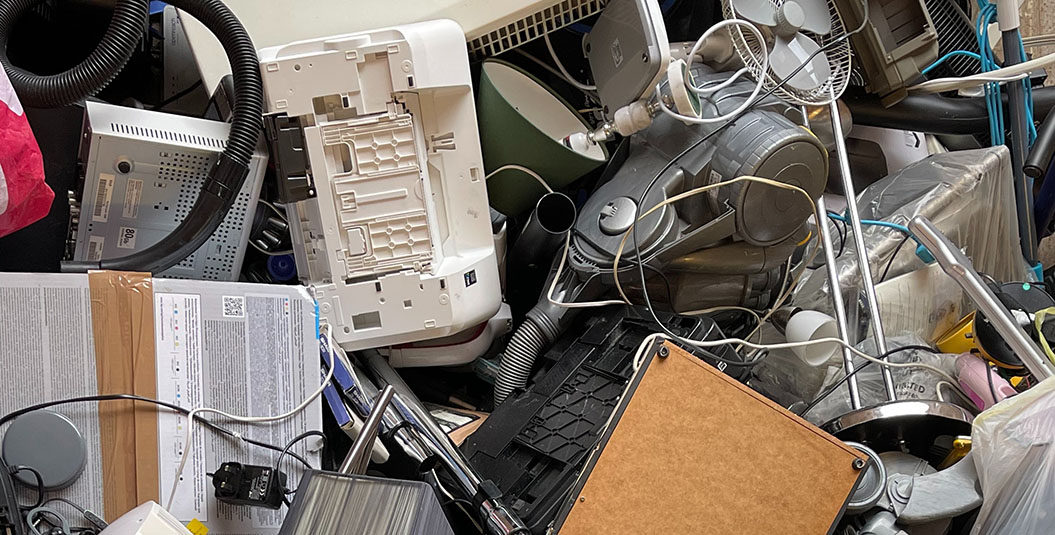E-waste is going to waste – but a new international standard could change that
E-waste, or WEEE, (waste from electrical and electronic equipment) is the fastest-growing and most complex waste stream worldwide. A new international standard for the sustainable management of e-waste will set requirements to achieve the best environmental outcome by focusing on the recovery of products, components, and materials.

Managing this waste stream is essential as global e-waste generation will reach 74 million tonnes a year by 2030, nearly doubling since 2014. In 2022 alone, one-third of mobile phones worldwide became e-waste. The negative consequences of this unmitigated growth are enormous for both people and the planet. We need to make sure we recover, and keep using, as much of the resources as possible.
Electronic waste is growing and it’s not stopping soon
We need an urgent focus on stemming the ever-growing tide of e-waste. Electronics will remain an integral part of our daily lives, so it is high time to step up global efforts to increase the longevity and repairability of electrical and electronic products through ecodesign, complemented by an efficient recovery of products and components.
More must be done to capture the vast number of resources contained in discarded electronic appliances. Globally, just 17% of e-waste reached recycling facilities in 2019, with the remaining 83% poorly or even illegally disposed of. Worse still, a large proportion of this e-waste was dumped in low- or middle-income countries and contributes to conflicts, human rights abuses, chemical pollution, and environmental degradation. Similarly, two-thirds of printed circuit boards are not handled by environmentally sound facilities, instead, they are often treated in unregulated backyard recycling facilities, causing environmental damage and risks to human health.
Only a fraction of valuable material contained in e-waste is recovered and there is huge untapped potential to prevent waste by recovering functioning products and components and returning them to the market.
The first international standard for sustainable e-waste management
Since 2021, the International Electrotechnical Commission (IEC) has been working on an international standard for the sustainable management of electrical and electronic waste. We have been heavily involved in the drafting of this standard, formally known as IEC 63395, which will be published in 2024 and is meant to work towards environmental protection by:
- providing a step-by-step approach to manage discarded electrical and electronic equipment through methodological steps and decision diagrams to assess product recovery potential.
- prioritising the recovery of functional products and components over the recovery of materials.
- setting requirements for recovery processes that protect human and environmental health, g. avoiding, reducing or substituting the use of resources which pose health or environmental risks.
While other e-waste standards and legislation mainly focus on waste management solutions and limited recycling, the new IEC 63395 standard provides a practical approach for implementing the waste hierarchy by giving precedence to repair, refurbishment, and remanufacturing over material recovery, such as recycling.
This is great news for the planet, and something environmental experts have been advocating for years. The standard will not only help increase the proportion of e-waste recovered as functioning products and components, but it will also prevent and mitigate harm to people and the environment by identifying and managing environmental impacts of e-waste recovery and disposal.
How can we manage e-waste in a circular economy?
The standard focuses on the best environmental outcome of e-waste management, and we are very happy to see this approach to implementing the waste hierarchy. We would like to see further development of IEC 63395 that makes specific reference to protecting people and the environment from the harmful impacts of e-waste, especially in recovery activities that involve subsistence workers.
This innovative, international standard lights the way for the future development of a European overarching e-waste standard. The approach is focused explicitly on environmental sustainability and the resulting requirements provide a useful basis for a future-proof Waste Electrical and Electronic Equipment (WEEE) Directive that supports the EU’s Circular Economy Action Plan.
Let’s reduce, rethink, repair, reuse and only as a last resort – recycle our electronics!

 By
By 
